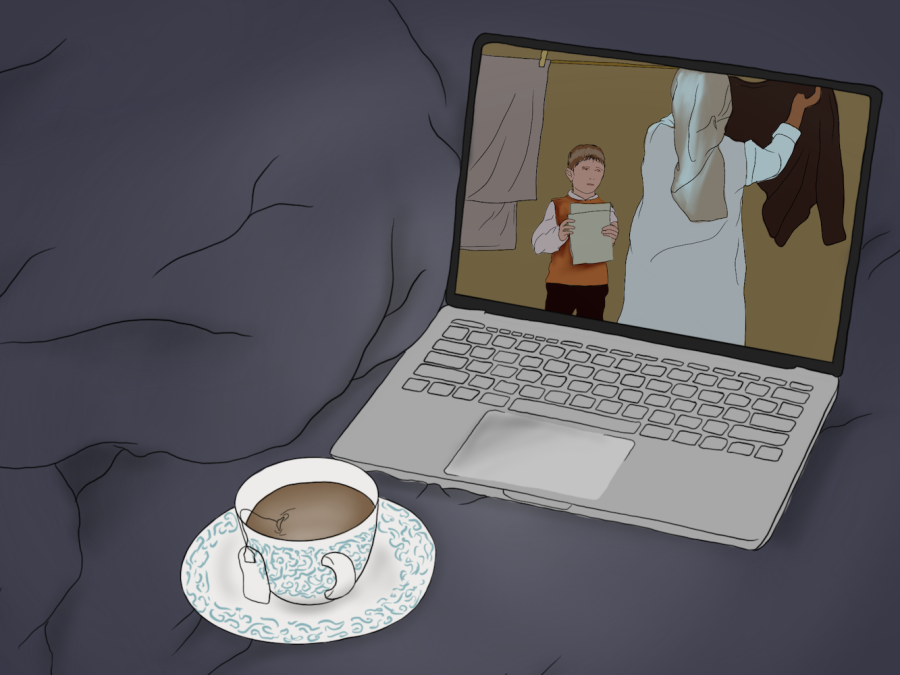Off the Radar: ‘Where Is My Friend’s House?’ and the importance of empathy
Off the Radar is a weekly column surveying overlooked films available to students for free via NYU’s streaming partnerships. “Where Is My Friend’s House?” is available to stream on Kanopy.
(Illustration by Aaliya Luthra)
March 24, 2023
Abbas Kiarostami is considered by many to be one of the most innovative filmmakers of all time. While the late Iranian director is most famous for his experimental auteur films such as “Close-Up,” “Taste of Cherry” and “Certified Copy” — films that pushed technical boundaries and created different ways to view cinema as a whole — his earlier work tends to be overlooked. Kiarostami’s third feature film “Where Is My Friend’s House?” displays his nuanced humanism, compassion and dedication to simplicity.
“Where Is My Friend’s House?” — which is a part of Kiarostami’s larger, thematically intertwined “Koker Trilogy” — is first and foremost a film about empathy. Whether it be through the adults’ lack of empathy for the children or the children’s endearing amount of empathy for each other, the film outlines what it’s like to be a small kid in a big world. It tells the story of Ahmad (Babak Ahmadpour), an 8-year-old boy who accidentally takes his friend Mohammad Reza’s (Ahmad Ahmadpour) notebook and embarks on a simple and intimate journey, wherein he tries to return the notebook lest his friend get expelled from school.
Although the film centers on Ahmad’s empathy for his friend, it also deconstructs the treatment of children in society. In the beginning of the film, Mohammad is scolded by his teacher for failing to write his homework in his notebook, which brings the boy to tears. By the same token, Ahmad’s mother — who is stressed and busy taking care of her baby, the house and laundry — shows very little acknowledgement of Ahmad’s need to return the notebook, instead saying, “Do your homework.”
While this may irritate the viewer, as she is neglecting her son and is simply not listening to him, her behavior is also justified when one takes into account her family’s living conditions, her priorities and the household’s lack of a father figure. With its child protagonist, the film continually begs the viewer to consider all sides of every story, never coming across as definitive or single-minded.
The simplicity of the narrative and craftsmanship is what drives “Where Is My Friend’s House?” and makes it so charming and powerful. The villages of Koker and Poshteh, as well as the hills, landscapes and forests through which Ahmad travels to return his friend’s notebook, make up the film’s beautiful photography and framing. The main theme, which occasionally plays as Ahmad continues on his journey, elevates the film and fills the experience with energy and delight. As Ahmad travels, the audience willingly follows him into the unknown, and develops a familiarity with the environment.
“Where Is My Friend’s House?” also shines in its performances, especially from Ahmadpour, who gives one of the most nuanced child performances in cinema history. In fact, all of the child actors in the film exhibit a strong sense of naturalism and innocence. The children’s mannerisms, signs of ambition, and ranges of expression help ground the film in its pre-established realism. The performances in no way feel like acting. They simply feel like children talking to one another — an illusion most other narrative films are incapable of delivering.
Despite the film’s incredibly minimalist presentation, its subtlety is overpowering, adding a layer of complexity to what appears to be an innocent and simple tale. Realism has never been so perfectly established in a film that, ironically enough, feels entrancing and magical to the point of being a wondrous fairytale.
Contact Yezen Saadah at [email protected].

























































































































































